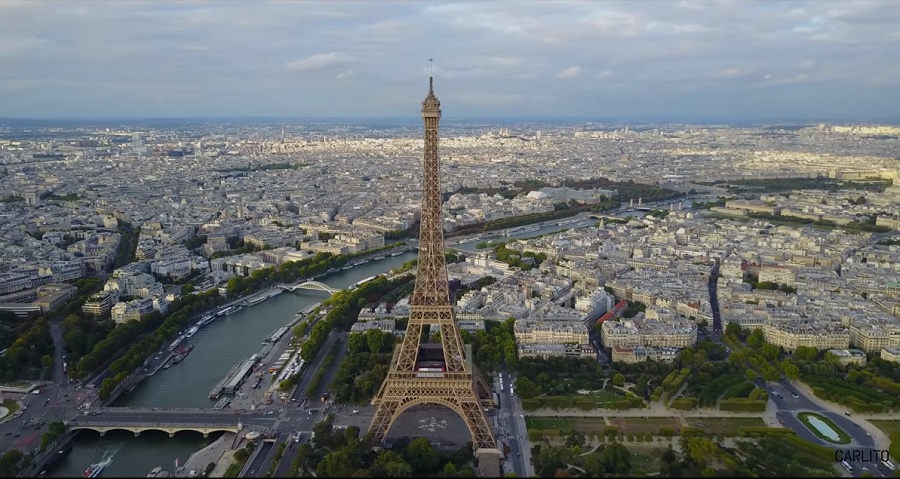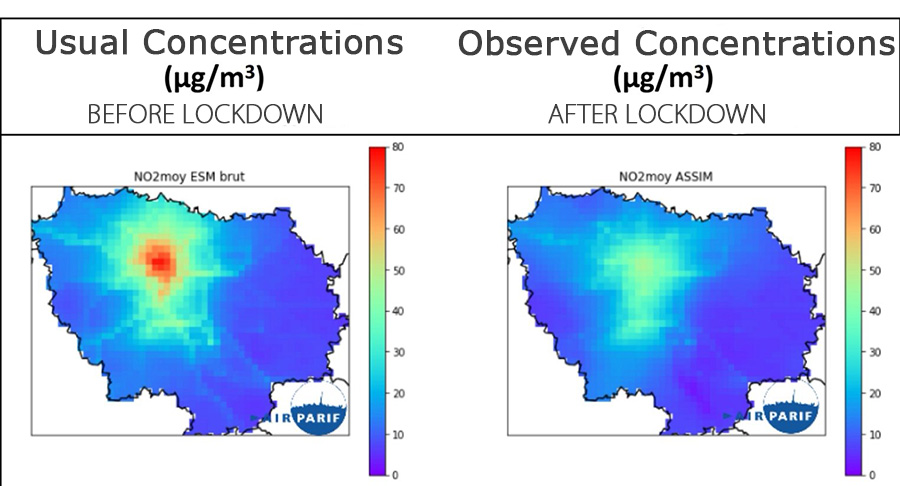Fall of 70 to 80% of road traffic and more than 50% (currently 75%) of plane flights in Ile-de-France: Airparif noted at the end of last week a drop of 32% in CO2 and more than 60% for nitrogen oxides. The indicators go green on the territory.

With the current containment in an attempt to limit the spread of the coronavirus as much as possible, the pollution indices are extremely low in Ile-de-France.
A very reduced pollution level that Airparif described as “never seen in Ile-de-France for a long time” on Radio France Bleu.
According to Airparif report: To limit the spread of the COVID-19 virus, containment measures were put in place by the authorities from Tuesday, March 17 at noon. This summary presents the impact of these measures on air pollution, and in particular nitrogen dioxide, mainly coming from traffic in Île-de-France, and particles, the sources of which are more numerous, by comparing the pollution levels (quantity of pollutants released and pollution levels in the air) between a normal March and the first days of containment. This assessment highlights an improvement in air quality of around 20 to 30% in the Paris conurbation, following a drop in emissions of more than 60% for nitrogen oxides. On the other hand, PM10 and PM2.5 particles were hardly visible during these first days of confinement. Other good news, this drop in air pollutants is accompanied by a drop in carbon dioxide (CO2), a greenhouse gas.

With the implementation of containment measures from Tuesday, March 17 at noon, a significant drop in nitrogen oxide emissions was noted as soon as this action was fully implemented (a drop greater than 60% from Wednesday 18 March). Despite an increase in residential heating, this drop is largely due to the sharp decrease in road and air traffic. For nitrogen oxides, the drop in emissions is also reflected in concentrations, with an improvement in the quality of the air breathed by 20 to 30% depending on the weather conditions encountered between March 17 and 20.
On the other hand, little impact was found for particles which come from other sources and for which the reduction in traffic did not compensate due to increase in residential heating and the maintenance of agricultural activities. In fact, air quality was not as good as expected on Wednesday March 18. But with the strong limitation of traffic, the levels have not increased to the point of lower visibility. This would probably have been the case in normal times, with similar conditions and normal traffic.









